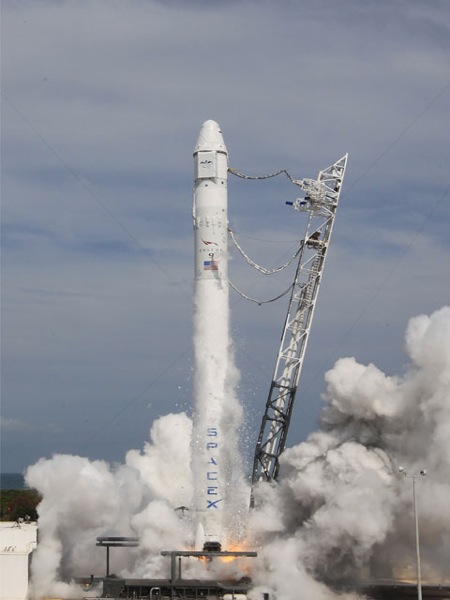The current government shutdown has severely impacted NASA. According to The Verge:
The National Aeronautics and Space Administration will see over 90 percent of its civilian workforce immediately furloughed: 17,701 out of 18,250 total employees, according to the shutdown plan the agency filed last week. As President Obama put it in an emergency address last night, "NASA will shut down almost entirely, but Mission Control will remain open to support the astronauts serving on the Space Station."
The shutdown plan link in the article no longer works, since all of NASA's websites and social media accounts have beeen shut down. The good news is that the astronauts on the ISS will be supporrted. One way they can deal with the stress is to run up a wall!
Creepy photo, huh? I took the above photo of the treadmill that astronauts use to stay in shape while on the International Space Station (ISS) during my trip to NASA Mission Control in Houston, TX earlier this year. Using the port and starboard nautical terms for left and right, the treadmill is essentially on the wall. But in a weightless environment of space, the terms up, down, left or right have no absolute meaning.
Here's a photo of the actual treadmill, which was named after Stephen Colbert after he won a naming contest. As you can see his smiling face in the photo above, the treadmill is officially called the Combined Operational Load Bearing External Resistance Treadmill (COLBERT).
Astronaut Karen Nyberg posted this video recently of her experience on the treadmill. She needs to be tethered so she doesn't float off, and the treadmill itself can't be fixed completely onto the wall - it needs to be able to move so that the forces put on the treadmill by the runner don't affect the flight path of the station. Remember, this is space, and there is no drag or wind resistance to prevent movement - any little push can seriously set you off course.
The video is set up so that it looks like the treadmill is on the "bottom" of the ISS, but if you look closely at the orientation of other objects, you can see that we are actually on the "wall".
In addition to seeing the treadmll, I was fortunate enough to meet Karen and the other current residents of the International Space Station before they departed on their trip as Expedition 36. Of course I'm right next to Karen because she loves me. Here's one of my favorite pics ever!
Fyodor Yurchikhin, Karen Nyberg, me, Luca Parmitano







